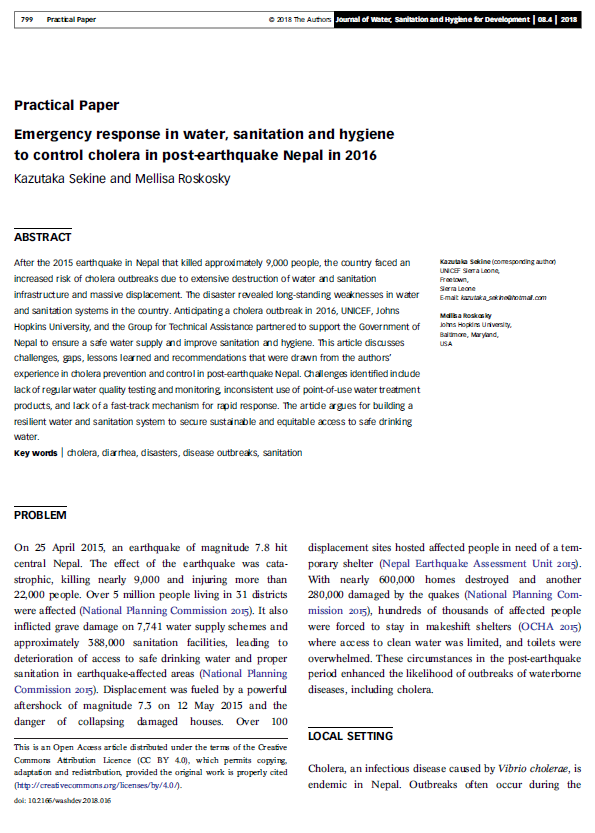GWC Helpdesk
Contact GWC
Emergency response in water, sanitation and hygiene to control cholera in post-earthquake Nepal in 2016
After the 2015 earthquake in Nepal that killed approximately 9,000 people, the country faced an increased risk of cholera outbreaks due to extensive destruction of water and sanitation infrastructure and massive displacement. The disaster revealed long-standing weaknesses in water and sanitation systems in the country. Anticipating a cholera outbreak in 2016, UNICEF, Johns Hopkins University, and the Group for Technical Assistance partnered to support the Government of Nepal to ensure a safe water supply and improve sanitation and hygiene. This article discusses challenges, gaps, lessons learned and recommendations that were drawn from the authors' experience in cholera prevention and control in post-earthquake Nepal. Challenges identified include lack of regular water quality testing and monitoring, inconsistent use of point-of-use water treatment products, and lack of a fast-track mechanism for rapid response. The article argues for building a resilient water and sanitation system to secure sustainable and equitable access to safe drinking water.